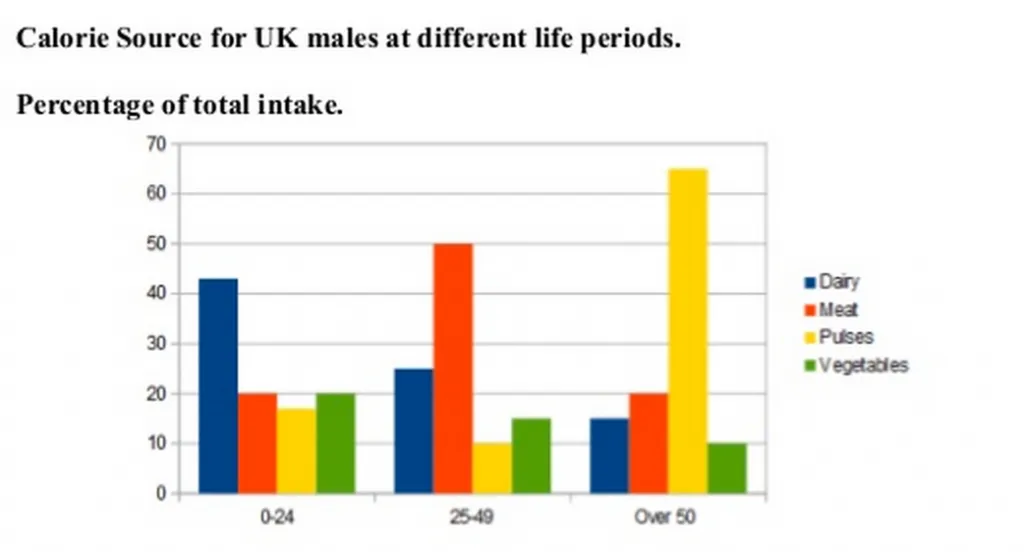Calorie sources for UK males at different life periods. Percentage of total intake.
Home » Academic writing task 1 sample essays & answer » Calorie sources for UK males at different life periods. Percentage of total intake.

The bar chart shows the different calorific sources of UK males of varying age groups, 0-24, 25-49 and 50+. The sources are dairy, meat, pulses and vegetables.
Between being born and reaching 24, the main source of calories was dairy produce, with over 40% coming from dairy products, and the other sources equal at around 20%, except pulses which represent around 18%. For the 25-49 age group, meat was by far the largest source at exactly 50% of total calorie intake, followed by dairy at 25%, vegetables at 15% and pulses representing just 10%. For the over 50 group, the largest contributor was pulses at well over 60%, followed by meat, dairy and vegetables in that order.
Overall it is clear each group leans towards one predominant calorie source. Pulses were the least favoured choice for the younger groups, with vegetables also making up a minority contribution amongst every age group.
For more IELTS academic task 1 questions, click here.
Version B:
The bar chart shows the different calorific sources of UK males of varying age groups; namely 0-24, 25-49 and those over the age of 50. The sources are dairy, meat, pulses and vegetables.
Between birth and age 24, the main source of calories is dairy products, at over 40% of total intake, with the other sources equal at around 20%, except pulses which represent around 18%. For the 25-49 age group, by far the largest source was meat at exactly 50% of total calorie intake, followed by dairy at 25%, vegetables at 15% and pulses representing just 10%. Regarding the over 50s, the largest contributor were pulses at well over 60%, followed by meat, dairy and vegetables in that order.
Overall it is clear each group leans towards one predominant caloric source over the rest. Pulses are the least favoured choice for the younger groups, and the consumption of both dairy and vegetables decreases with age, with vegetables also making up a minority contribution amongst every age group.
